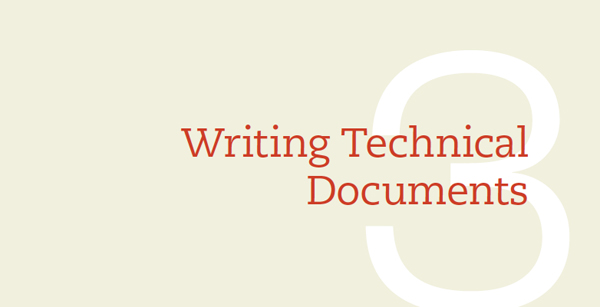3 Writing Technical Documents
Printed Page 41-42

TUTORIAL: Cross-Platform Word Processing with CloudOn, Quip, and More 
TUTORIAL: Creating Outlines 
TUTORIAL: Creating Styles and Templates 
LEARNINGCURVE: Understanding the Technical Communication Environment and 
This chapter presents a writing process that focuses on the techniques and tools most useful for technical writers. Should you use the process described here? If you don’t already have a process that works for you, yes. But your goal should be to devise a process that enables you to write effective documents (that is, documents that accomplish your purpose) efficiently (without taking more time than necessary). At the end of this chapter, you will find a Writer’s Checklist. After you try implementing some of the techniques described in this chapter, you can start to revise the Writer’s Checklist to reflect the techniques that you find most effective.
The writing process consists of five steps: planning, drafting, revising, editing, and proofreading. The frustrating part of writing, however, is that these five steps are not linear. That is, you don’t plan the document, then check off a box and go on to drafting. At any step, you might double back to do more planning, drafting, or revising. Even when you think you’re almost done—when you’re proofreading—you still might think of something that would improve the document. That means you’ll need to go back and rethink all five steps.
As you backtrack, you will have one eye on the clock, because the deadline is sneaking up on you. That’s the way it is for all writers. A technical writer stops working on a user manual because she has to get it off to the print shop. An engineer stops working on a set of slides for a conference presentation because it’s time to head for the airport. So, when you read about how to write, remember that you are reading about a messy process that goes backward as often as it goes forward and that, most likely, ends only when you run out of time.
Remember, too, that many of the documents you produce will never truly be “finished.” Many types of documents that live online are called living documents because they are meant to be revised as new information becomes available or policies change. Benefits manuals, for example, keep changing.